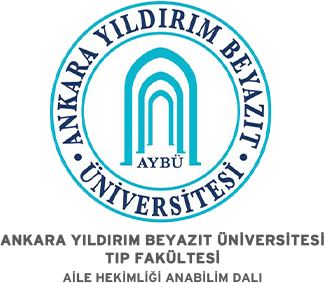Acil Servise Müracaat Eden Hastaların Aile Hekimliği Bakış Açısıyla Değerlendirilmesi
Burcu Kayhan Tetik1, Bora Tetik2, Aytaç karaoğlan3, Cem alpağan4, Burak Mete5, Nur Paksoy61İnönü Üniversitesi Tıp Fakültesi Aile Hekimliği AD, Malatya2İnönü Üniversitesi Tıp Fakültesi Beyin Ve Sinir Cerrahisi AD, Malatya
3İnönü Üniversitesi Tıp Fakültesi, Malatya
4Malatya Eğitim Ve Araştırma Hastanesi Acil Servis Birimi, Malatya
5Çukurova Üniversitesi Tıp Fakültesi Halk Sağlığı AD, Adana
6Yeşilyurt İl Sağlık Müdürlüğü,Malatya
GİRİŞ ve AMAÇ: Acil servislerin gerçek kullanılma nedenleri dışında uygunsuz kullanılması her geçen gün artmakta ve acil servislerin işleyişini bozmaktadır. Çalışmamızda Acil Servise müracaat eden hastaların bir yıllık verileri incelenerek, bu hastaların son tanılarına göre, ne kadarının acil servisleri uygun kullandığını belirlemek ve bu konuda oluşturulacak yeni politikalara yardımcı olmak amaçlanmıştır
YÖNTEM ve GEREÇLER: 1 Ocak -31 Aralık 2017 tarihleri arasında hastanemiz acil servisine müracaat eden hastaların dosyaları incelenmiştir. Veriler SPSS 22 programı ile değerlendirilmiş, analizde Ki-kare testi kullanılmıştır. Anlamlılık değeri p<0.05 olarak kabul edilmiştir.
BULGULAR: Acil servise bir yıl içinde başvuranların %72.20sinin (n: 42785\59282) birinci basamak veya uzman polikliniği başvurusu gerektiren nedenler ile başvurduğu, başvuru yapanların sadece %19.2sinin (n: 11359\59282) gerçekten acil başvurusuna uygun olduğu bulunmuştur. Tüm müracaatlar içinde solumun sistemi ve ağrı şikâyetleri en sık başvuru nedenleridir.
TARTIŞMA ve SONUÇ: Acil servise başvuran hastaların büyük çoğunluğunun aslında acil kategorisinde olmadığı görülmüştür. Acil servislerdeki iş yükünün azaltılması aile hekimliği sisteminin etkin kullanılması için sevk sisteminin uygulanması, acil servislerde triaj uygulanmasının kullanılması ve uygunsuz şekilde acil servisi kullananlardan ekstra ücret alınması gibi önlemlerin uygulanabileceği kanaatindeyiz.
Evaluation of Patients Admissing Emergency Care Services from the Point of View of Family Medicine
Burcu Kayhan Tetik1, Bora Tetik2, Aytaç karaoğlan3, Cem alpağan4, Burak Mete5, Nur Paksoy61Inonu University Medical Faculty, Department Of Family Medicine, Malatya, Turkey2Inonu University Medical Faculty, Department Of Neurosurgery, Malatya, Turkey
3Inonu University Medical Faculty, Malatya, Turkey
4Malatya Research And Training Hospital Department Of Emergency, Malatya, Turkey
5Cukurova University Medical Facullty, Department Of Public Health, Adana, Turkey
6Yeşilyurt Community Health Center, Malatya, Turkey
INTRODUCTION: Inappropriate use of Emergency Department (ED) for non-urgent complaints compromises the functioning of ED and has been increasing day by day. In this study we examined the annual data of the patients who admitted to the Emergency Department in order to determine the ratio of appropriate usage according to the definitive diagnoses of the patients and to help forward new policies regarding this issue.
METHODS: Files of patients, who admitted to our ED between January 1 and to December 31 2017, were examined. Data were evaluated by SPSS software version 22 and the analyses were performed by using Chi-square test. A value of p <0.05 was accepted to be statistically significant.
RESULTS: We found that 72.20% (n: 42785\59282) of the people who admitted to the ED during one year had admitted for complaints that should be addressed in the primary healthcare centers or specialist policlinics and only 19.2% (n: 11359\59282) of the ED visits were appropriate. We also found that the most frequent reasons for ED visits were respiratory system symptoms and pain.
DISCUSSION AND CONCLUSION: We found that the vast majority of the patients who admitted to the emergency department were not actually urgent. We suggest that measures such as effectuation of the referral system for effective use of the family medicine system, use of triage in emergency departments, and extra fees for using the emergency department inappropriately can be implemented to reduce the workload in emergency services.
Makale Dili: İngilizce
(927 kere indirildi)





